By Dhwani
Shanghvi
Photography:
Read time: 3
mins
The Urchins and Lace are light art installations designed from hand-crafted crochet
that interact with their immediate context through their textured weave and
porous pattern…
Designed by Jin
Choi and Thomas Shine for the iLight Marina Bay, Singapore, the Urchins are conceptualised under the theme
of sustainability and biomimicry. The Marina Bay waterfront, anointed a
sustainable precinct, aims to encourage sustainable practices in daily life
through the iLight festival, thus mandating that the installations be created
with energy-saving lighting and environmentally-friendly materials.
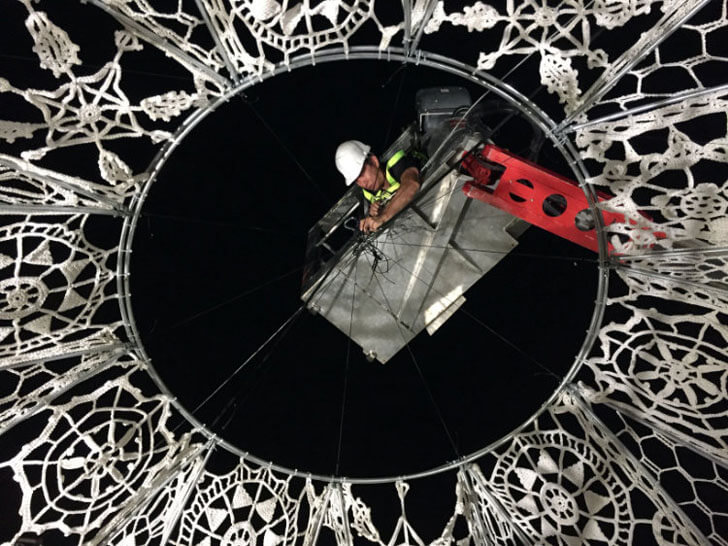 |
| . |
The shell of the
sea urchin, which has inspired the structure of the installation, is
interpreted as a lightweight, soft and open form, whose rhythmic pattern
sustains visual harmony. Translating these properties, the Urchin is fabricated from a repetitive pattern of crochet fabric,
held in place with steel trusses, fastened by Dyneema cables. The diaphanous
structure, supported on aluminium frame, is anchored using thin suspension cables
- barely visible and only perceived through the kaleidoscope of shadows created
during the day.
Standing as a
shelter against the sun, the installation transforms during the night to emanate
light on its occupants. The permeable membrane of the fabric thus creates a
dialogue between the ground and the man-made high rises that form the city
fabric.
The Lace, designed for the 2016 Amsterdam
Light Festival, evolved around the theme of “The City of Amsterdam”, as a
three-dimensional hovering canopy over the Herengracht canal. Viewed as an
integral part of Dutch art and culture, Lace
is sculpted as an undulating surface resembling a Dutch bonnet. The hand-crocheted
weave alludes to the urban structure of Amsterdam, as a network of canals,
rivers, roads, and squares, overlaid with a diverse population, while the
hovering form is a manifestation of the city’s flight to the future. The weave
is thus also symbolic of the network between the past and the present.
Structurally,
the Lace is like the Urchin, built from Dyneema cords and
polyester cables, suspended in tension. The lightweight structure comprises 18
rectangular and 32 triangular panels, each of which is illuminated with
multiple light sources.
The floating Lace is experienced sequentially during
the canal boat tours; the first impression being that of a remote mass of light
reflected in the water. As one approaches the sculpture, the intricate details
(a reflection of classical Dutch patterns), are unveiled on the porous canopy
that seemingly encloses the space. The viewer thus experiences the sculpture
both through its corporeal form as well as through its reflection in the canal
below. As one cruises along, the canopy dips, as if to almost touch the
occupant until it feints gently, freeing the viewer from its enticing clutches.
The Light Art
installations thus augment a sense of space and anchor visual memory through a
simple familiar object that has been contextualised into a larger-than-life
format.
Fact File:
Light Art
Installation: The Urchin, The Lace
Location:
Singapore, Amsterdam

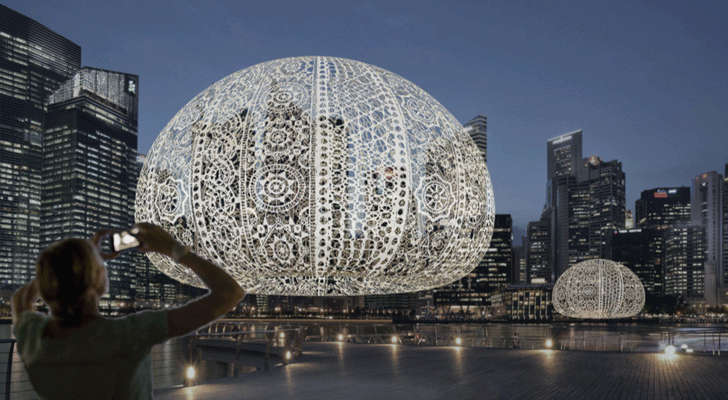
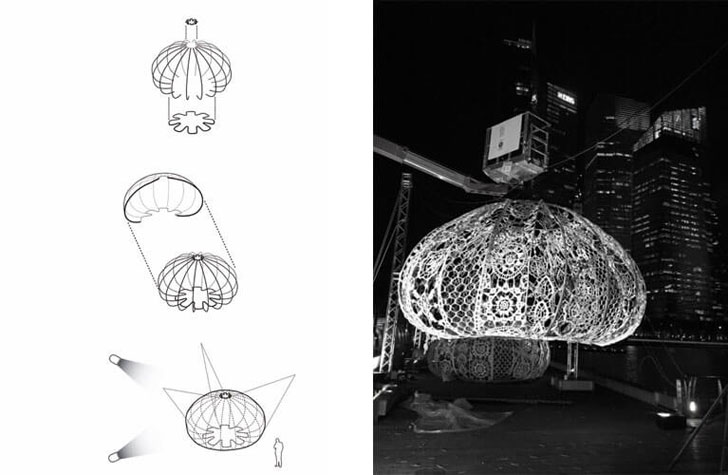
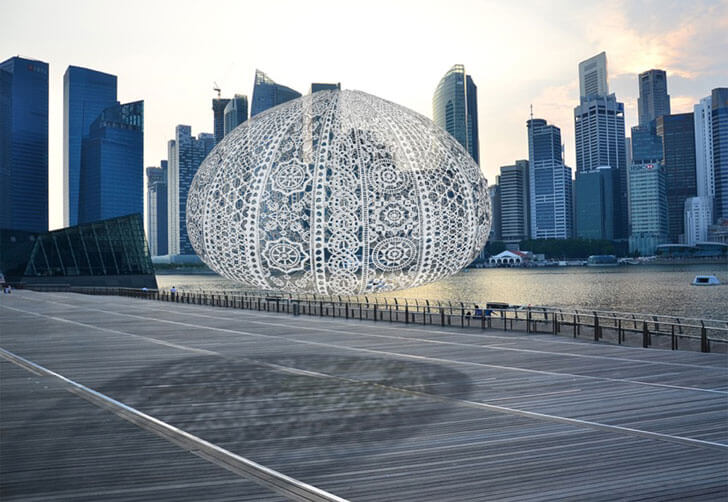
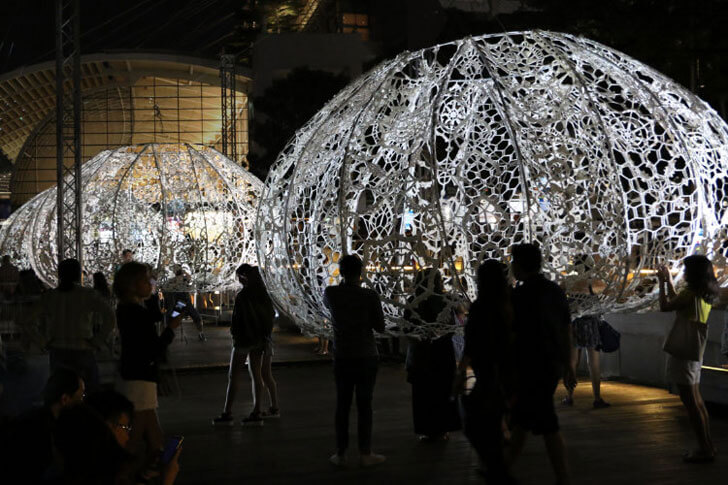
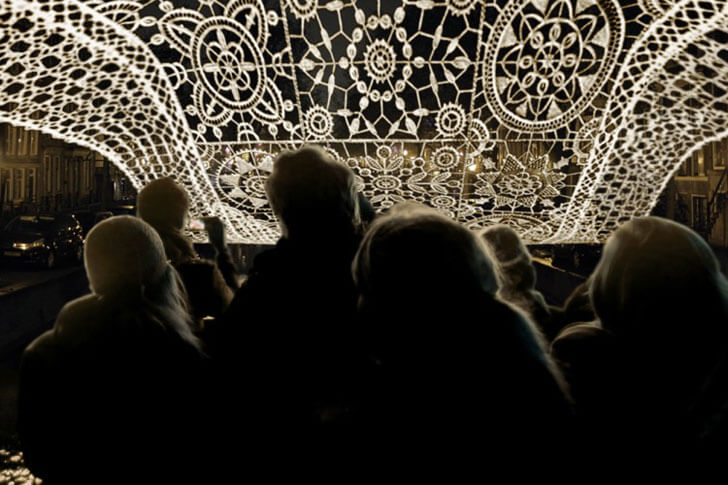

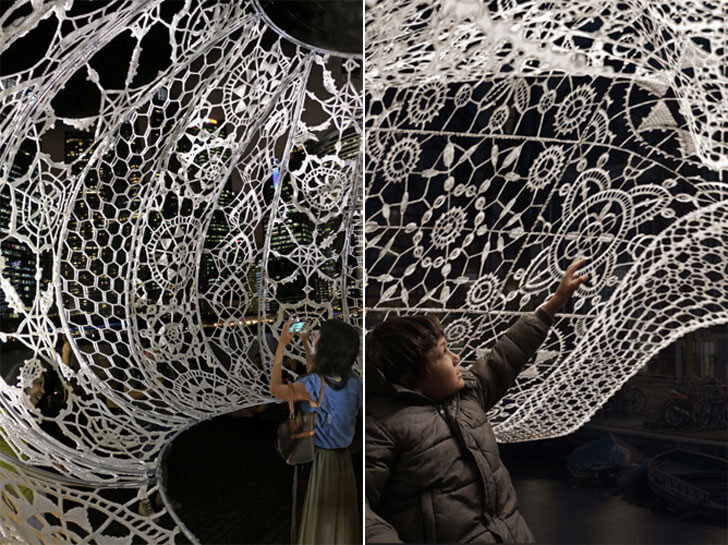
No comments :
Post a Comment